
Nginx monitoring for reliable performance and uptime
We monitor Nginx in real time so you can spot slow requests, configuration regressions, and error spikes before customers notice. Xitoring collects key Nginx metrics, ingests access and error logs, and triggers alerts tied to your SLOs so teams act fast and confidently.
Why Monitor Your Nginx Server?
Downtime can cost your business dearly. Unplanned outages can lead to lost revenue, damaged reputation, and frustrated users. Can you afford to take that risk?
Monitoring your Nginx server’s performance is not just a good practice; it’s a business imperative. Here’s why:
- Optimize Resource Usage: Efficiently allocate resources and prevent overloads.
- Ensure Reliability: Identify and resolve issues before they impact users.
- Enhance Security: Detect and respond to security threats in real-time.
- Improve User Experience: Deliver a smooth and responsive website experience.
Nginx powers APIs, web apps, and reverse proxies at scale. Small shifts in traffic patterns, upstream latency, or configuration can cause sharp increases in request time and 5xx errors. Continuous visibility into Nginx performance and logs helps you detect regressions, reduce customer impact, and shorten incident cycles.
What you gain:
- Detect slow endpoints and high tail latency before SLAs are hit.
- Correlate error spikes with deploys, config changes, or upstream failures.
- Prioritize fixes with percentile-based metrics and correlated logs.
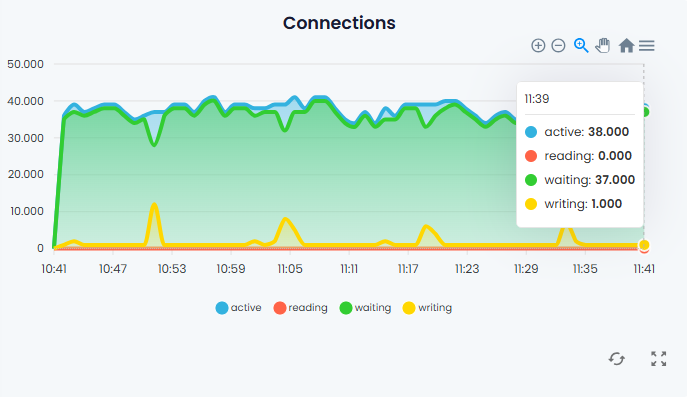
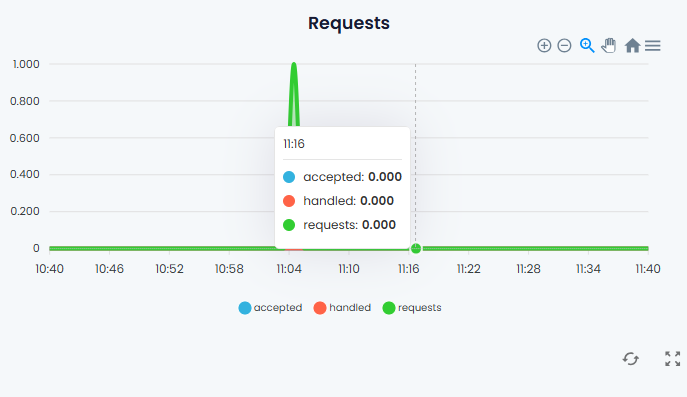
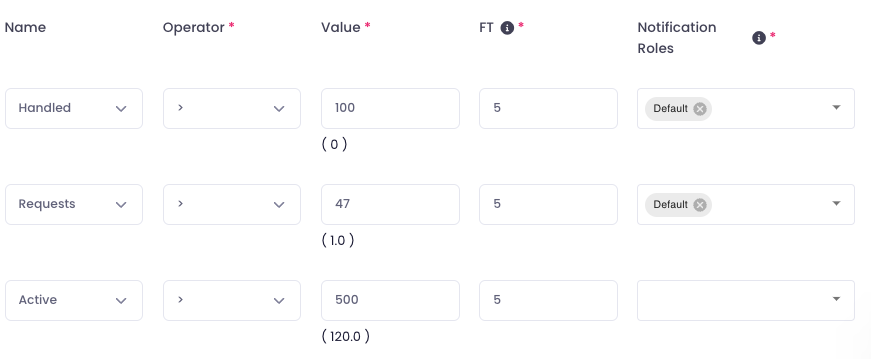
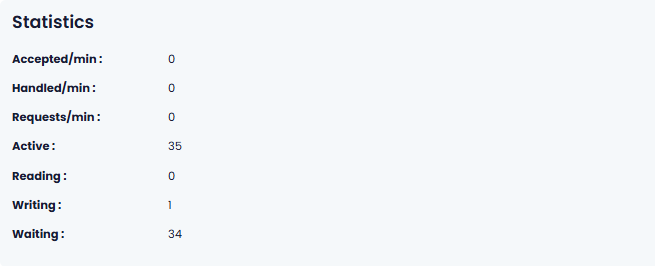
How Xitoring Works for Nginx Monitoring?
Real-time Alerts – Xitoring provides real-time alerts that notify you when something isn’t right with your Nginx server. Whether it’s a sudden spike in traffic, an unusual error rate, or a security threat, you’ll know about it immediately.
Performance Metrics – Performance metrics are crucial for maintaining a smoothly running Nginx server. Xitoring collects data on key performance indicators, such as:
- CPU Usage: Monitor how your server’s CPU is handling the load.
- Memory Usage: Keep an eye on RAM utilization.
- Network Traffic: Track incoming and outgoing traffic to your server.
- Response Times: Measure how quickly your server responds to requests.
This data is presented in easy-to-understand graphs and charts, enabling you to spot trends and act accordingly.
Security Checks – Security is a top concern for any web server administrator. Xitoring includes security checks that monitor your Nginx server for vulnerabilities and suspicious activities. This feature helps you:
- Identify Intrusions: Detect unauthorized access or intrusion attempts.
- SSL Certificate Monitoring: Ensure the validity of SSL certificates to maintain a secure connection.
- Malware Scanning: Scan for malware and vulnerabilities that could compromise your server’s security.
Customizable Dashboards – Every administrator has unique monitoring needs. Xitoring understands this and allows you to customize your dashboard to display the information that matters most to you. Whether you want a quick overview or a deep dive into specific metrics, it’s all at your fingertips.
Historical Data Analysis – Xitoring stores historical data, allowing you to analyze past performance and identify trends. This feature helps you:
- Plan for Growth: Predict future resource needs based on historical data.
- Troubleshoot Effectively: Compare current performance with past data to identify issues.
- Evaluate Changes: Assess the impact of server configuration changes.
What we collect for Nginx performance monitoring
Requests per second
Real-time RPS and short-term RPS trends to track traffic bursts and steady-state load across worker processes.
Active connections
Current active, reading, writing, and waiting connections plus accepted/handled counts for capacity planning.
Latency metrics
Time to first byte, request/response latency, and upstream response times with percentile breakdowns for slow-path detection.
Error rates
4xx and 5xx counts, status-code distribution, and error-rate trends to surface regressions after deploys.
Process and connection health
Worker process CPU/memory, connection queue/backlog sizes, and file-descriptor usage for operational stability.
Log ingestion and parsing
Structured access and error log parsing (custom formats supported) for fast root-cause searches and correlating logs with Nginx metrics.
Understanding Xitoring’s Nginx Monitoring Alert Triggers
When it comes to Nginx monitoring, staying informed about the vital aspects of your server’s performance and activity is key. Xitoring goes the extra mile to ensure you have comprehensive insights into your Nginx server by offering a range of alert triggers. These triggers provide real-time updates on various critical parameters, helping you keep your Nginx server in optimal condition. Here’s a breakdown of Xitoring’s Nginx monitoring alert triggers:
Active Connections
The “Active” alert trigger keeps you informed about the number of currently active connections to your Nginx server. This metric is crucial for ensuring that your server can handle the incoming traffic load efficiently. Sudden spikes in active connections can be indicative of increased traffic or potential issues, making this alert trigger essential for proactive server management.
Accepted Connections
“Accepted” connections are a measure of how many incoming connections your Nginx server is accepting. Monitoring this parameter ensures that your server can effectively handle new client connections. A sudden drop in accepted connections might indicate a problem with the server’s ability to accept new traffic.
Handled Connections
This alert trigger reports on the number of connections that your Nginx server is actively handling. It helps you understand how effectively your server is managing incoming traffic. Tracking this metric is essential for maintaining a responsive and reliable server.
Reading
The “Reading” alert trigger monitors the number of connections currently reading requests from clients. An increase in the “Reading” metric could suggest that your server is dealing with a high volume of incoming requests, which might require further optimization.
Writing
The “Writing” alert trigger indicates the number of connections that are currently writing responses to clients. A sudden spike in “Writing” connections can provide insights into your server’s responsiveness and its ability to handle client requests.
Waiting
The “Waiting” alert trigger informs you about the number of connections that are currently in a waiting state. Monitoring this parameter helps you understand if there are any requests or clients waiting for server resources. Excessive waiting connections can lead to performance issues, so it’s essential to keep an eye on this metric.
Requests
The “Requests” alert trigger tracks the total number of requests that your Nginx server has received. This metric is fundamental for assessing the overall traffic load and usage patterns. An increase in requests may necessitate adjustments to your server’s configuration or resource allocation.
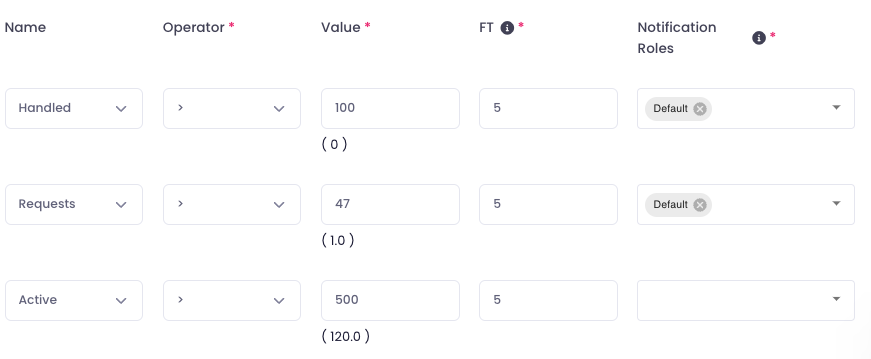
How to start monitoring your Nginx?
-
1
Install Xitogent
Easily run one command and install Xitogent on your Linux or Windows server
-
2
Enable Integration
Now run `xitogent integrate` on your server and select Nginx, It will ask for your status page url. Provide the url and proceed.
-
3
Configure Triggers
You can easily configure several triggers and alerts and receive them in your favorite notification channel.
How Xitoring Saved a Business from Disaster
Saving money with Xitoring!Let's take a look at a real-world scenario to illustrate the impact of Xitoring. A small e-commerce business was experiencing a sudden surge in traffic due to a marketing campaign. Their Nginx server started to show signs of strain, with increased response times and intermittent outages.
The business had Xitoring in place, and it immediately sent alerts about the rising load and slow response times. The administrators were able to identify the issue, allocate additional resources, and optimize their server for the increased traffic. Thanks to Xitoring's real-time alerts and historical data analysis, they not only survived the traffic spike but also used the insights to plan for future marketing campaigns more effectively.
Try Xitoring with your Nginx stack
Test real traffic, validate alerts, and parse logs—full access for a limited trial period to prove impact.
FAQ
Does Xitoring support Nginx Plus?
Yes. We collect the same core metrics and additional Plus-specific endpoints where available.
How much does it cost for each Nginx Server?
Nginx monitoring is included at no cost for all servers. on the Flexible plan, each server costs $5.00/mo and you can save much more on combo plans (up to 50%)
More details about pricing
How long does it take to setup Nginx monitoring?
If you have Xitogent running on your server on average it would take two minutes to configure and make everything running!
More technical details can be found here: How to monitor Nginx on Xitoring
How to monitor Nginx for free?
Xitoring offers 30 days trial to try Nginx monitoring. Basic Server metric and uptime monitoring is always free.
Can you parse custom log formats?
Yes. Our parser supports custom access_log formats and extracts fields for quick queries.
What kind of alerts do I get for Nginx monitoring?
There are many options to configure your customized trigger and alerts, including a number of connections or requests per sec.
What graphs do you provide for Nginx performance monitoring?
We provide graphs for Load, Requests, Connections, etc.
Need Help or Quote?
Have questions or need assistance? Our dedicated support team is here to help. Reach out to us anytime, and we’ll be happy to assist you.


